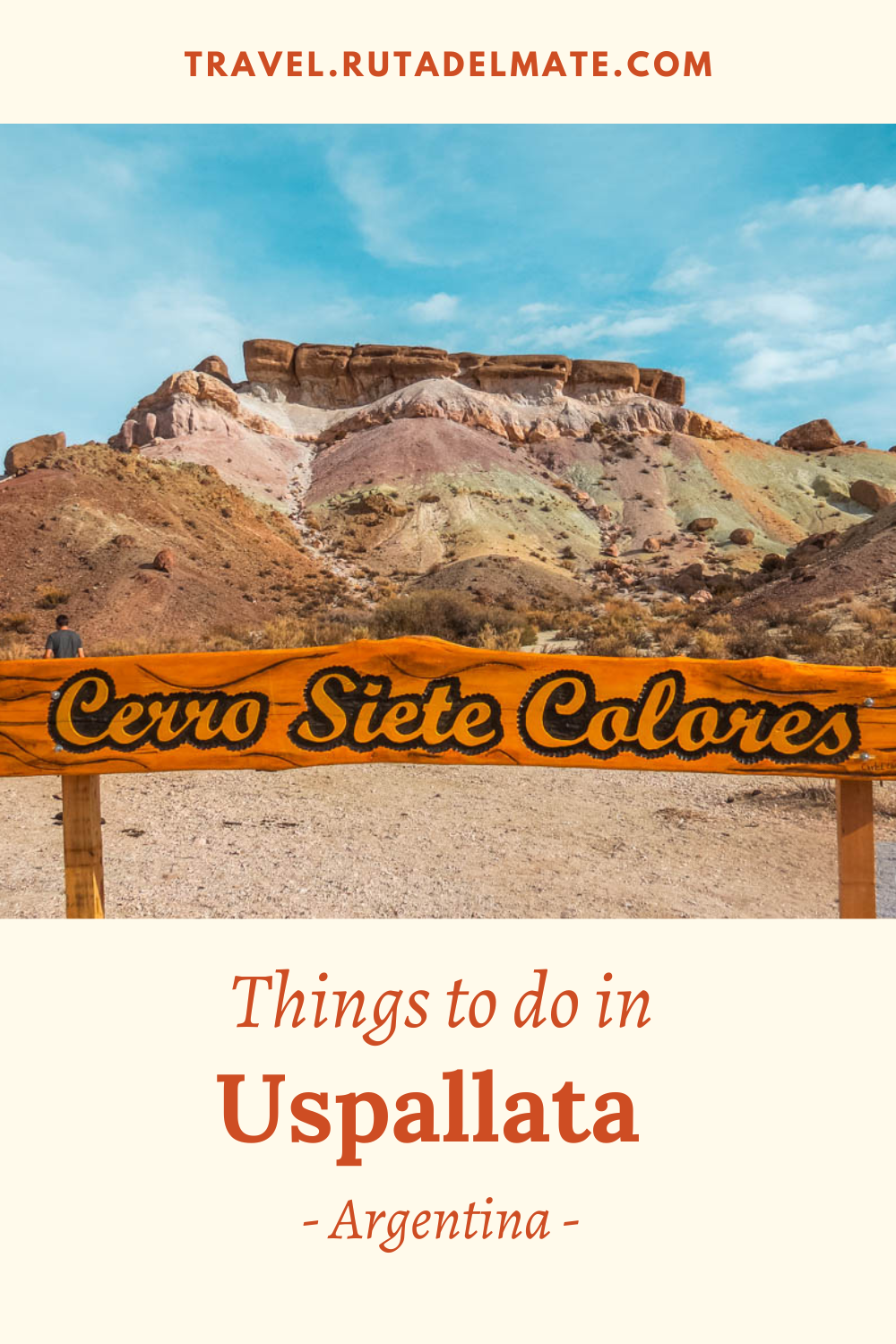We show you things to do in Uspallata, this small town in the province of Mendoza, which is the best place to visit Mount Aconcagua.
About 120 kms from Mendoza city, Uspallata is surrounded by the mountains of the Andes. A few kilometers away, the Aconcagua peeks out in all its splendor.
Its privileged enclave with the high snowy peaks in the background, make Uspallata a place for outdoor activities and to be in contact with nature.
Historic sites where Gen. San MartínThe colorful hills and a small town are other attractions that Uspallata has to offer.
🔝 See also all there is to do in Mendoza and surroundings.
Map of things to do in Uspallata and surroundings
We could say that in two days you can tour around Uspallata, but if you really want to enjoy the environment, trekking and hiking, you should add a few more days.
🔝 Take a look at our one- or two-week road trip through Mendoza and San Juan (including maps).
Aconcagua Provincial Park
One of the best things to do in Uspallata is to view Mount Aconcagua, the highest mountain in the whole continent at 6962 meters high and the highest in the world outside the Himalayas. Aconcagua is a word that comes from the Quechua language and means Stone Sentinel.
There are different ways to visit the National Park and we will tell you about them below:
– Interpretive trail Valle de los Horcones or Aconcagua viewpoint.
The most popular trekking in the park is the Valle de los Horcones interpretative trail, which is perfectly marked and the easiest to do (no effort-intensive ascents). It takes between 45 minutes to an hour to make the entire route, which is circular.
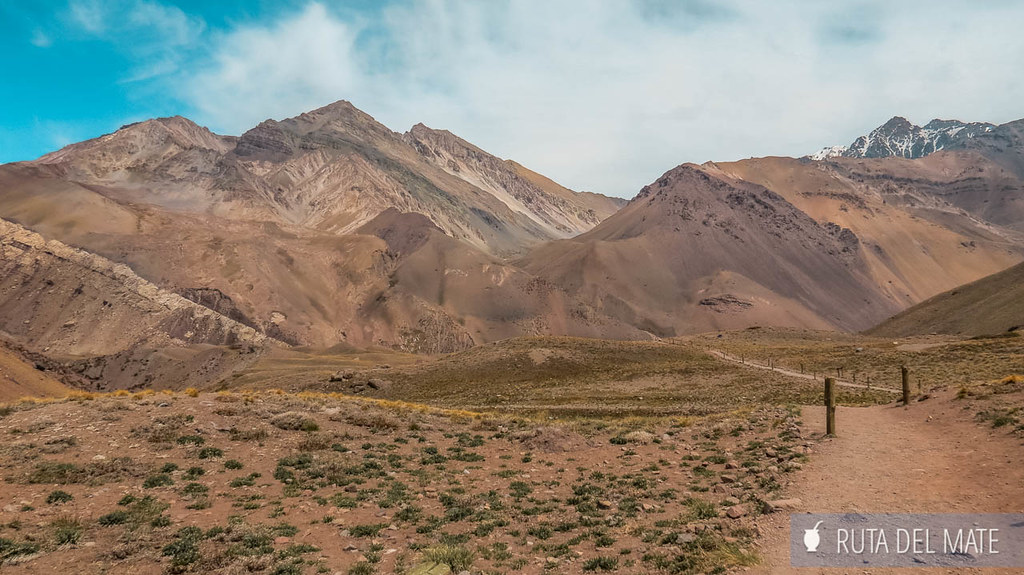
The two central points of the trail are the Aconcagua viewpoint, with fascinating views of one of the faces of the highest mountain in America, and the Horcones Lagoon, a small mirror of water that stands out among the hills.
But the different stops on the trail to the Aconcagua viewpoint are:
- Laguna Espejo, a high mountain wetland that comes from snowmelt (the size usually depends on the time of year and the amount of snow the previous season).
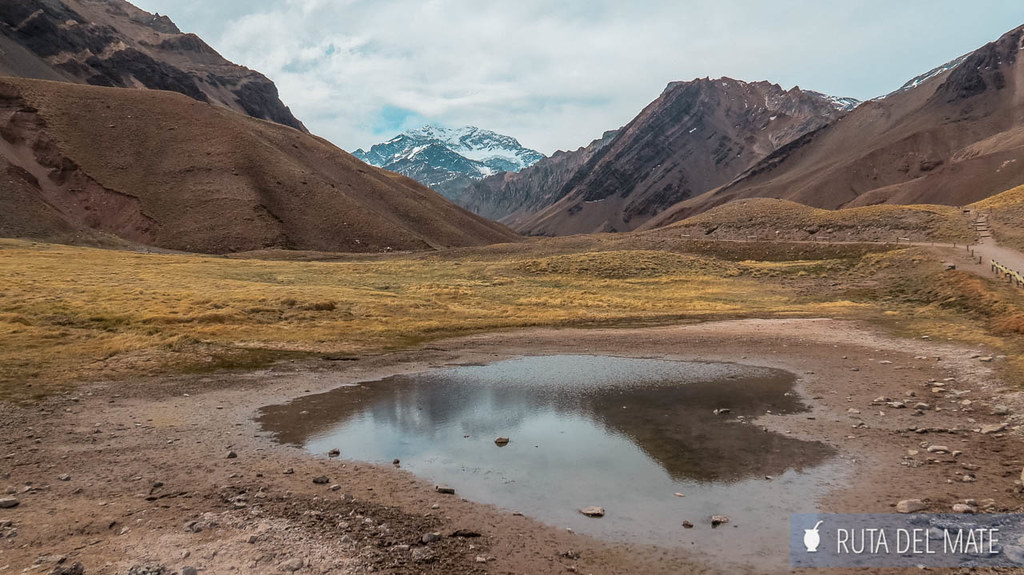
- Errant blocks are huge rocks called tillites that have been dragged by glaciers along the Horcones River and are now exposed.

- Viewpoint Pared Sur Cerro Aconcagua, is one of the great natural walls of the world with a height difference of 2700 meters, where you can see the hanging glaciers or seraks.

- Refugio Laguna Horcones, now in ruins, served as a base for excursions and walks in the summer.
- Laguna Horcones, another of the viewpoints of Mount Aconcagua, with benches to sit and rest.
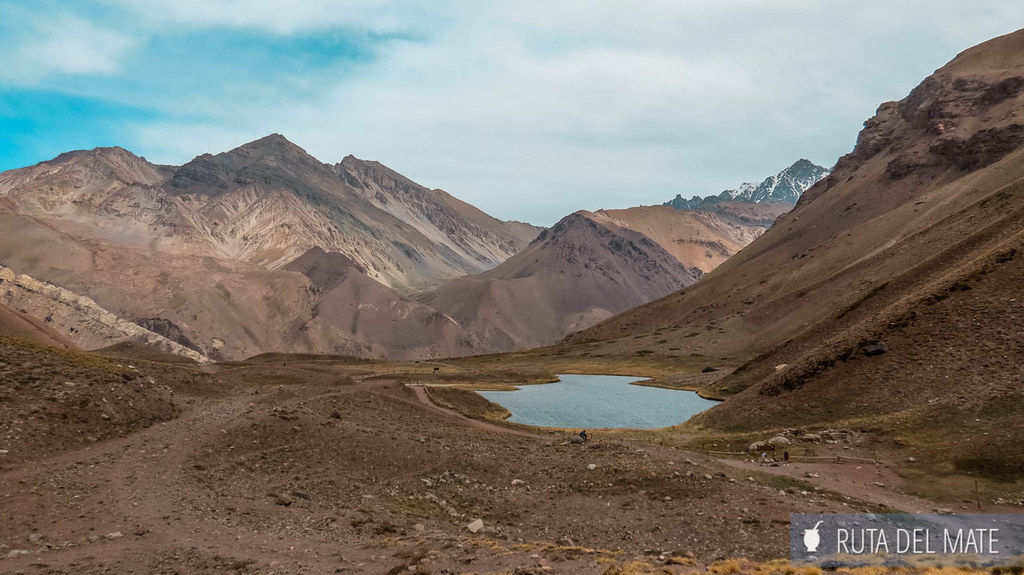
Throughout the hike, the mountain scenery surrounding the trail is spectacular as you are in the middle of the Andes Mountains. It goes without saying that you should wear comfortable shoes, plenty of warm clothes if you go in winter and a windbreaker in summer, as it is an area where it is very windy.
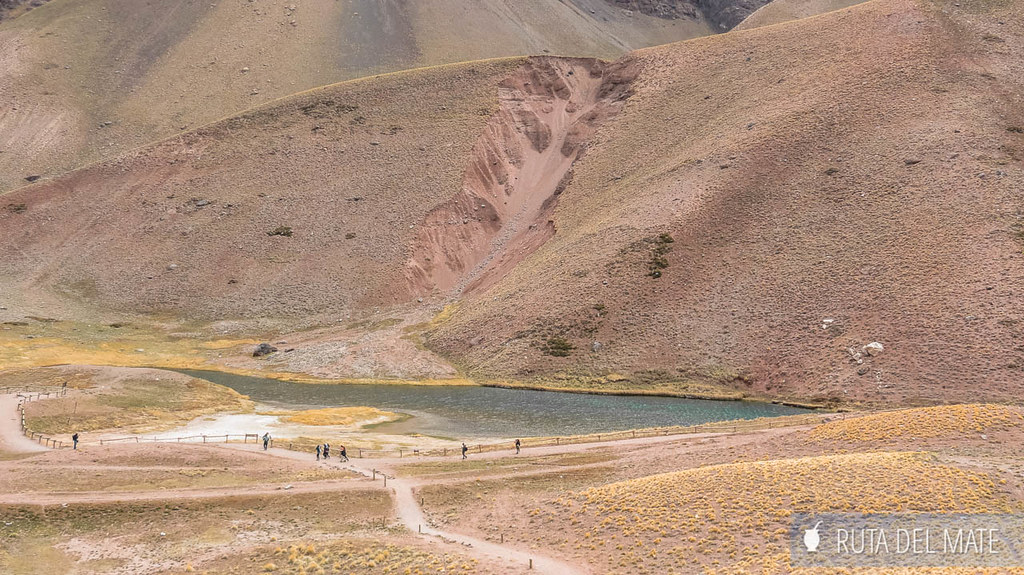
– Trekking to Aconcagua
There are other trails to do in the national park that can be full-day or multi-day. For any of them, you must apply for a permit at the National Park and pay the corresponding fees according to your nationality and number of days of trekking.
The two trails to do are:
- Valle de los Horcones (in the map above is the one marked in green): there are day treks up to Confluencia and treks of several days going deeper into the valley, either going up to Plaza Francia or Plaza de las Mulas.
- Valle de las Vacas (on the map above is the one marked in purple/purple): the trek starts at Punta Vacas and goes along the valley along the Vacas River and turns off to go to Plaza Argentina.
🔝 Check out this article about trekkings in Aconcagua Provincial Park.
– How to get to Aconcagua from Uspallata or Mendoza
If you are traveling from Mendoza, you will also pass through Uspallata to go to Aconcagua. So the data for both locations are the same.
If you are traveling through Mendoza in your own car or in a rental car, take route 7 towards the border crossing with Chile. After passing the Puente del Inca bridge, you will see the entrance to Aconcagua National Park on the right.
On the other hand, if you travel on your own by public transportation, the company that makes the trip to Cerro Aconcagua (it goes to Horcones and also stops at the Puente del Inca) is Transporte Buttini. It does not have many schedules during the day, so plan your trips well by approaching the Terminal del Sol in the city. Buses and buses that travel to Las Cuevas or Santiago de Chile also pass through the park access.
📷 If you want to book a tour from Mendoza to visit the Aconcagua Provincial Park that includes transfers, mountain guide, lunch and snacks. There is also a 2.50 hour trek to the Quebrada del Durazno Gorge Bridge (beyond the Horcones Lagoon). It does not include the entrance fee to the National Park.

2. Picheuta Bridge
Although it is a small stone bridge a few kilometers from Route 7, the bridge over the Picheuta River has a great historical importance for the country, since it was used by the liberator Gral. San Martin with his army to cross the Andes Mountains at the beginning of the 19th century. That is why it is another of the points within the Sanmartiniana route.
To get there you have to take a small gravel road detour, there is a sign on route 7 that indicates it. There are commemorative plaques and an iron silhouette of San Martin on horseback.
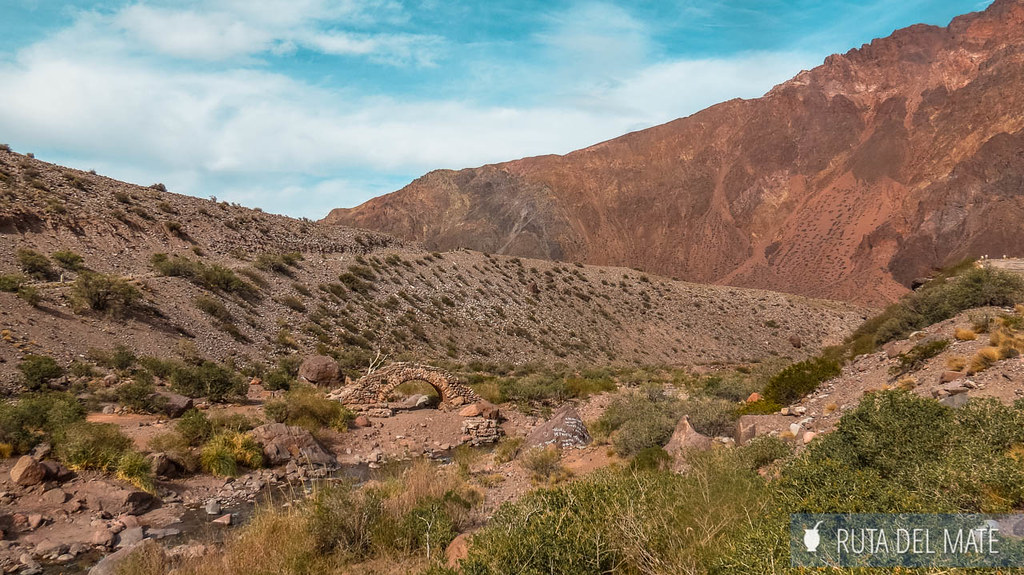
3. Inca Bridge
On the side of Route 7 and located at 2700 meters above sea level, another attraction to see in Uspallata is the famous Inca Bridge. It is a formation of stones with a yellowish color that forms a natural bridge over the Las Cuevas River.
Used centuries ago as a bridge to cross the river, at the beginning of the XX century and thanks to the discovery of thermal waters, the Puente del Inca hotel was installed in the place, a very important lodging with thermal baths for that time.

As a result of avalanches and landslides, the hotel was rendered unusable many years ago and is now totally abandoned.
📸 Check here the high mountain excursion in the Andes from Mendoza city and make a reservation. We will visit Uspallata, Puente del Inca, Cristo Redentor, Penitentes and Aconcagua National Park. Includes: transfers and guide.
4. Cristo Redentor, things to do in Uspallata
In the middle of the Andes Mountains and in the geographic limit between Argentina and Chile, the sculpture of Christ the Redeemer is located in the middle of the mountain at an altitude of 3850 meters.
Inaugurated in 1904 as a symbol of peace for the overcoming of conflicts between the two countries, arriving at the place is to find yourself in the middle of snowy mountains and great peaks with views of the mountain range that leave you open-mouthed.
To access the Cristo Redentor from Argentina, take the uphill gravel road that leaves from the town of Las Cuevas. It is about three kilometers of curves and switchbacks at high altitude, so you have to take a lot of precautions.
Warm clothing is a must, even in summer. The temperature difference and the strong wind due to being in the middle of the Andes Mountains is notorious.
5. Hill of the Seven Colors
About 10 kms from the center of Uspallata on route 13, the Siete Colores hill is a rock formation very similar to its namesake in Purmamarca.
With its white, yellow, reddish and green tones, it stands out among the arid landscape and the rest of the hills. In truth, the whole stretch of Route 13 from Uspallata is very nice to drive, but you have to take into account that it is gravel.
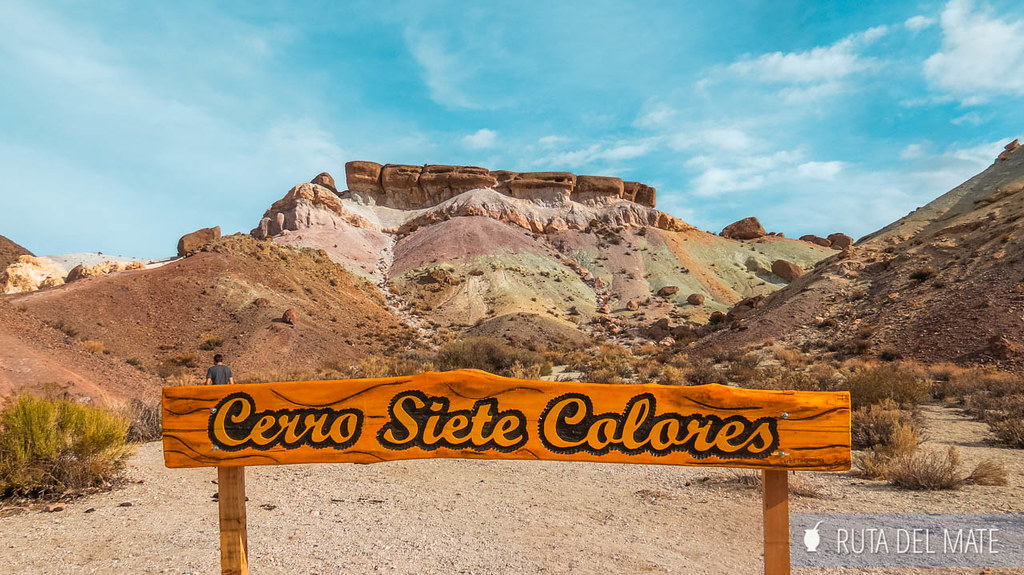
The best time to go to the Cerro de los Siete Colores is during sunset, when the reflection of the sun’s rays highlights the colors.
6. Villavicencio Natural Reserve, things to do in Uspallata
56 kilometers on Route 52 separate Uspallata from the Villavicencio Natural Reserve, one of the emblems of the province of Mendoza.
The Villavicencio Nature Reserve houses the old hotel of which today only the exterior façade can be seen since it is closed to the public and cannot be visited inside. The façade of the hotel is the symbol of the Villavicencio water brand, now owned by a private multinational company.
To visit the hotel and tour the reserve you must pay an entrance fee since the place is private. The tour of the complex is done with a guide, who explains the history of the place and the fauna that can be found inside the reserve, including guanacos, condors and foxes.
Within the reserve there are also places to go hiking in the mountains and a place to have a drink or a meal.
📸 Check here the excursion to Villavicencio National Reserve from Mendoza city and make a reservation. Includes: transfers and guide.
For more information about prices and schedules you can check the official website of the Villavicencio Natural Reserve.
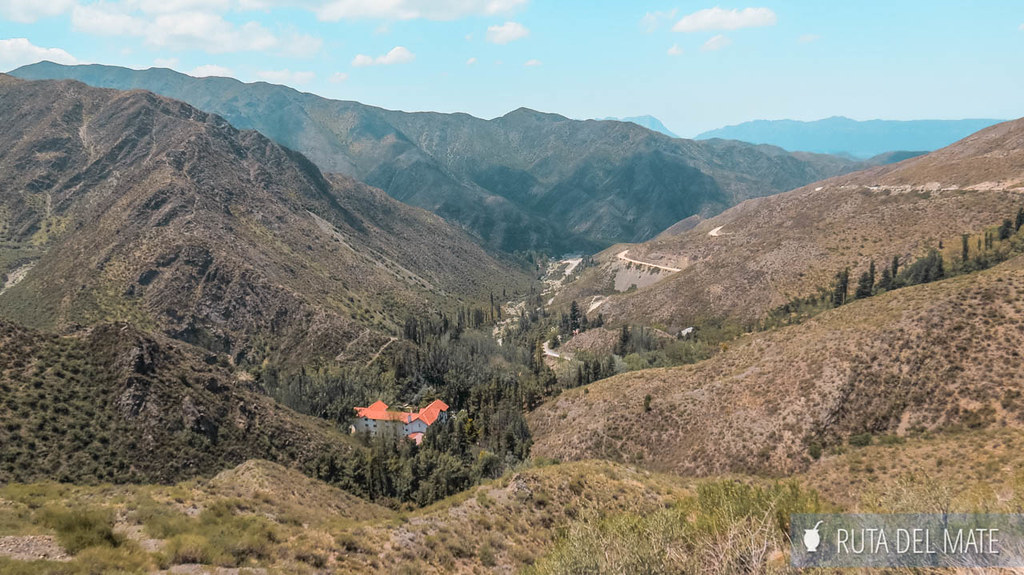
On the way from Uspallata, there are also other stops to make:
– The Snails of Villavicencio
If you access Villavicencio from Uspallata, the road is gravel with many curves and switchbacks reaching up to 3000 meters above sea level. The best part of the road is a few kilometers before reaching the reserve, the area known as the Caracoles de Villavicencio, where the road zigzags and the views are fabulous for stopping and taking photos.
– Mining Geopark: the Paramillo Mines
It is located only 25 km away from Uspallata on route 52 that goes to Mendoza passing through Villavicencio. It is an old mining settlement that has been in operation since the 17th century with the arrival of the Spanish and Jesuits to the area who were looking for silver and zinc. Also nearby is the “ghost town” where the original inhabitants, the Huarpes, who were enslaved to work the mines and the Jesuits, lived.
There are different activities to do, from a basic mining trek to a very adventurous one that includes rappelling into the mine. There is also a Tyrolean barbecue and you can have lunch there or a more basic menu. Undoubtedly an experience to live.
If you are going down to the mine, don’t forget to bring a coat, as it is very cold.
📌 Find out more on the Mining Geopark website.
– Darwin’s Araucaria Fossil Forest
Although the place looks desolate, you will identify it by the sign indicating that Charles Darwin, the great English explorer and naturalist, was there. And yes, this happened in 1835 when he visited Chile and decided to cross to Mendoza to visit the Paramillos Mine.
It was at that time that he discovered a deposit of petrified araucaria trees about 230 million years old. Today you can see the bases of the trunks and as many people were taking them away, some of them are preserved in the Juan Cornelio Moyano Museum of Natural and Anthropological Sciences located in the San Martin Park in the city of Mendoza.
– Paramillo Cross
They say it is the highest Via Crucis in the world and its intention is to unite religion with nature and history, because it is also considered part of what is the Sanmartiniana Route since this is the old route that linked Mendoza with Chile. At the end of the trail after a gentle trek there is a small chapel in honor of the Virgin of Fatima and a wooden cross that was built by the Jesuits in the seventeenth century. And also, breathtaking views of the Cordillera.
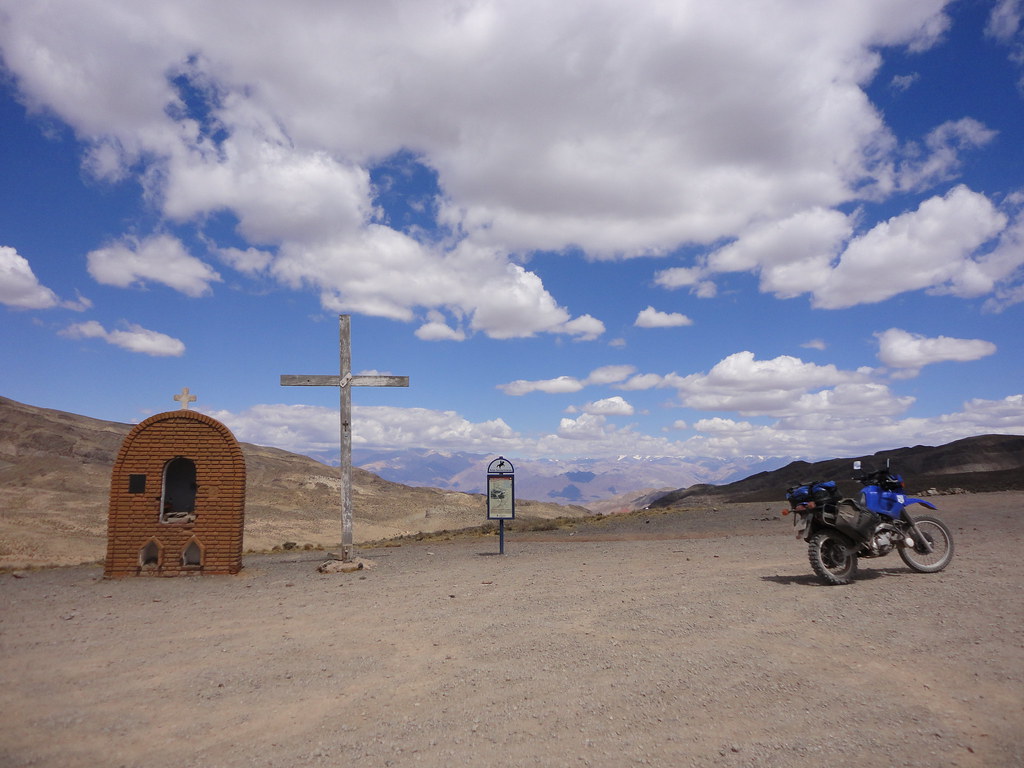
– Balcony viewpoint
And if the views of the mountain range haven’t tired you out yet, this is another stop to make on the road from Uspallata to Mendoza. Since it is a “balcony”, you can assume that what is there is a precipice called the Abismo del Indio, which is a steep 80-meter drop from the mountain.
💯⚠️📌 The road from Mendoza to Villavicencio is paved. But then, the ascent through the snails and all the way up to Uspallata is gravel with many curves and switchbacks, so you have to drive carefully.
7. The Vaults
Built in the early 18th century, the bovédas was an enclosure built for the smelting of minerals that were extracted from the site and later transported to Spain.
Large ovens built in clay with a stone base were the place where minerals such as gold and silver were deposited for smelting.
Subsequently, the Bóvedas had a place of preponderance in Argentine history since, according to the story, Gen. San Martin used them to smelt iron to build the weapons of the Army of the Andes.
At present, there is a weapons museum inside that can be visited.
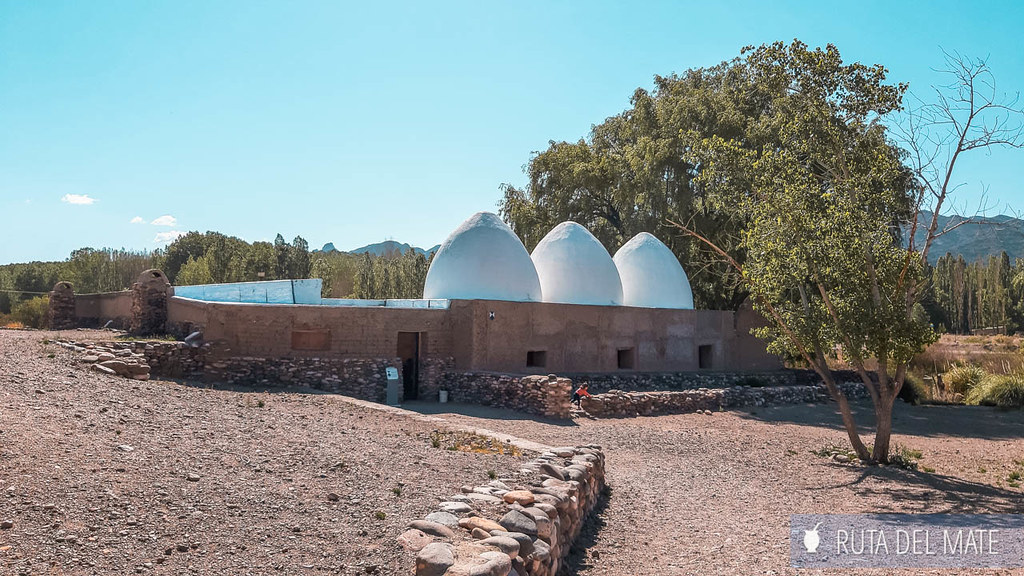
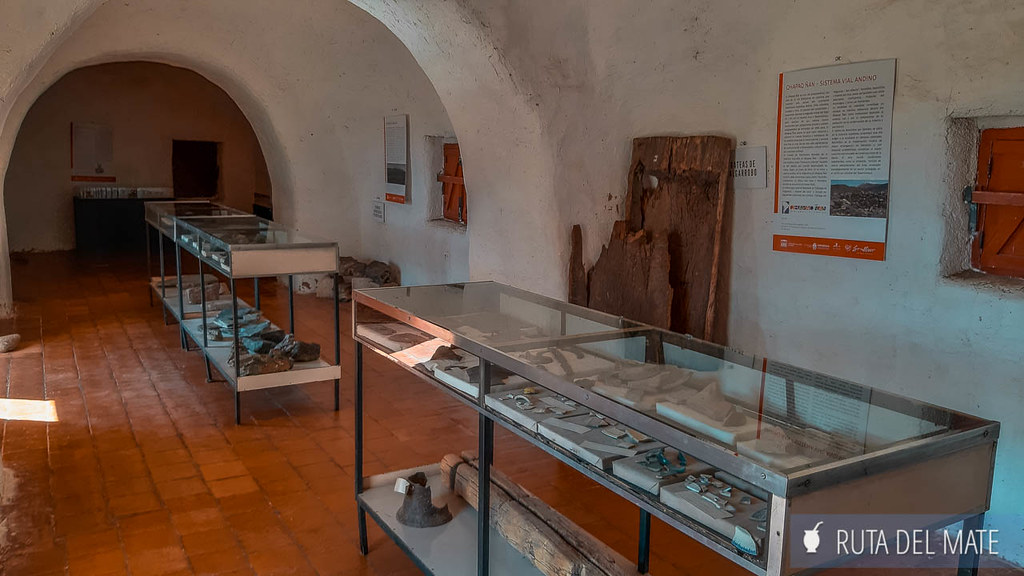
8. Tour the center of the city of Uspallata.
The center of Uspallata has many squares for children, large trees that provide shade on the sidewalks and a very quiet life both day and night.
It only takes a couple of hours to walk around the center at your leisure and eat in one of the restaurants.
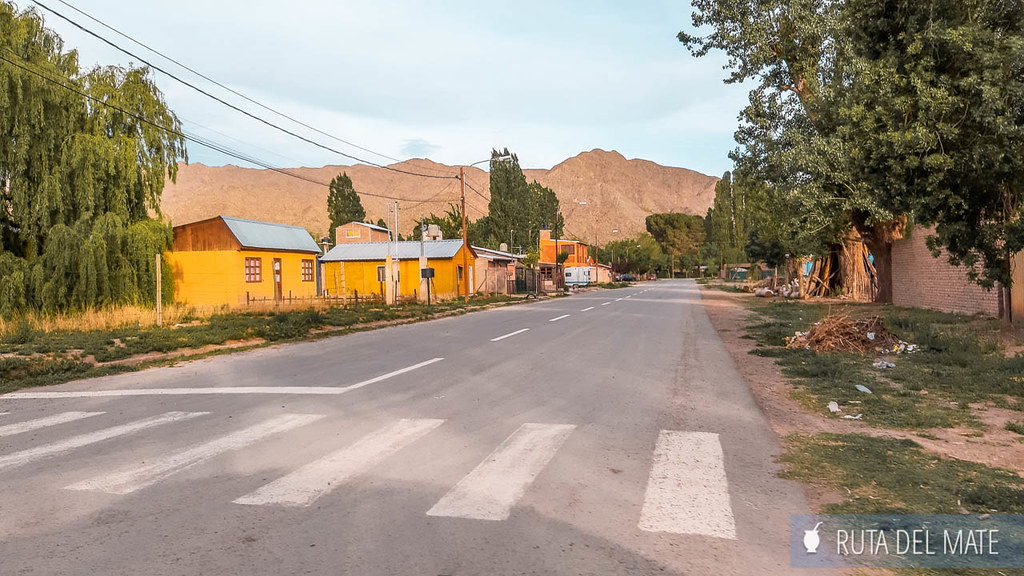
9. Sanmartiniana Tourist Route
The roads to cross the Andes that allowed General San Martin to carry out his plan to liberate Chile from the Spanish were called the Sanmartinian Routes. These are 6 and extend throughout the provinces of Mendoza, San Juan and La Rioja.
But then, at a tourist level, the province of Mendoza began to mark certain places related to this event as belonging to a San Martin route. In this way, many of these places do not fall into oblivion and are given the value they deserve.
Places in Mendoza
- 343 Corrientes Street, where San Martín lived with his daughter Merceditas while he was governor of Cuyo.
- Foundational Area
- Sanmartiniano Museum
- La Alameda Promenade
- etc
Places near Mendoza city
- El Plumerillo Historic Chapel
- El Plumerillo Historical Field
- Las Heras Historic Field
- Molina Pico House Museum
- Historic apple tree and monument to return to the homeland
- Sanmartiniano Parliament
- etc
Places near Uspallata
- Paramillos road to Uspallata
- The Vaults
- The Picheuta Bridge
- Christ the Redeemer
- etc
This is how the Sanmartinian Routes are marked:

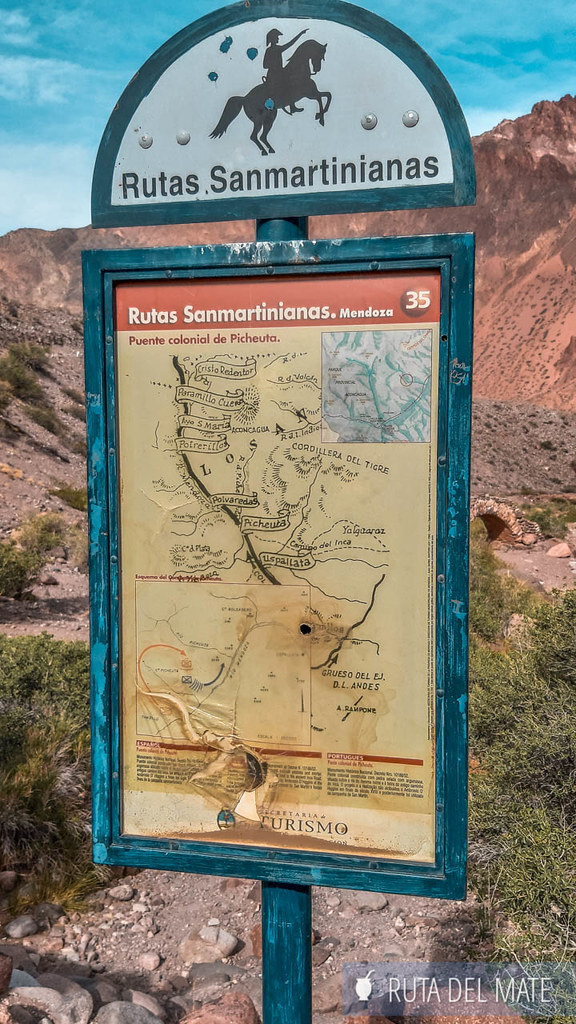
Where to stay in Uspallata
We stayed on the outskirts of Uspallata, near the intersection of routes 149 and 52, at Cabañas Isidris. It is a recently built complex with three cabins surrounded by spectacular scenery and mountain views. The owners are a couple who take care of every detail and are very helpful.
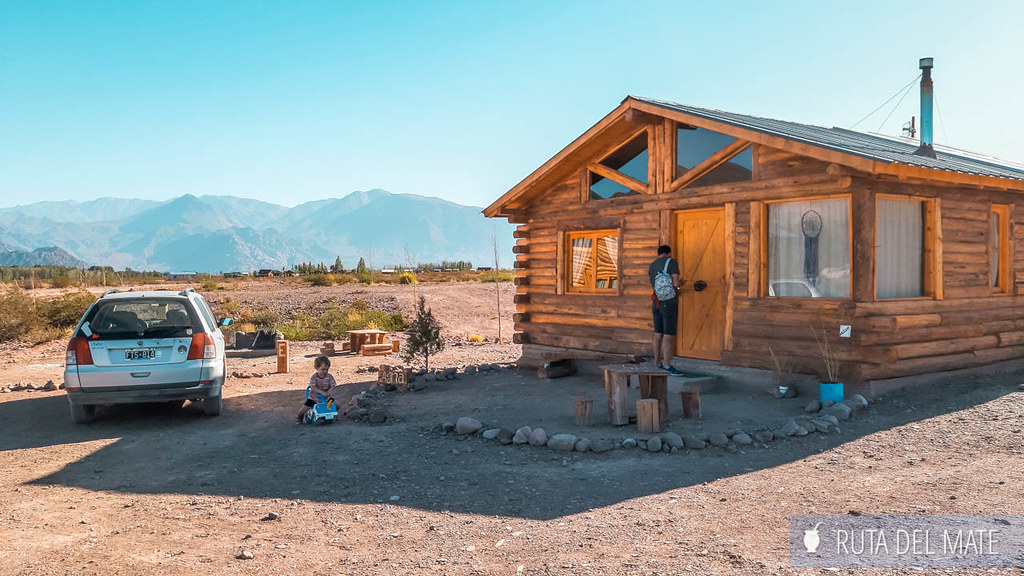
If you want to stay in the center of Uspallata, a good option is Hotel Los Condores. It offers a heated swimming pool, varied breakfast, restaurant and comfortable rooms.
🏨 Do you want to look for other options? Find here the best hotels in Uspallata.
Discounts and useful resources to save on your trip
Transport
- Rent a car with RentalCars
- Train, Bus and Ferry tickets for Europe with OMIO
- Passages through Asia with 12Go
Accommodation
Activities and Tours
More articles about Cuyo
- 10 Things to Do in San Juan Argentina, Sunny Destination
- 12 best Things to Do in Mendoza City and Surroundings
- 14 things to do in San Rafael Mendoza
- How to Get From Mendoza Airport to Downtown
- Mendoza travel itinerary in 5 Days, trekkings and nature
- Road Trip Through Mendoza and San Juan (+Map)
- The 6 Best Tours in Mendoza Argentina
- The Best Trekkings in Aconcagua Provincial Park
- Things to do in Calingasta Valley, San Juan Argentina
- Visit Ischigualasto, the Valley of the Moon in San Juan
- Where to Stay in Mendoza, the Best Hotels and Cabins
Pint it!
